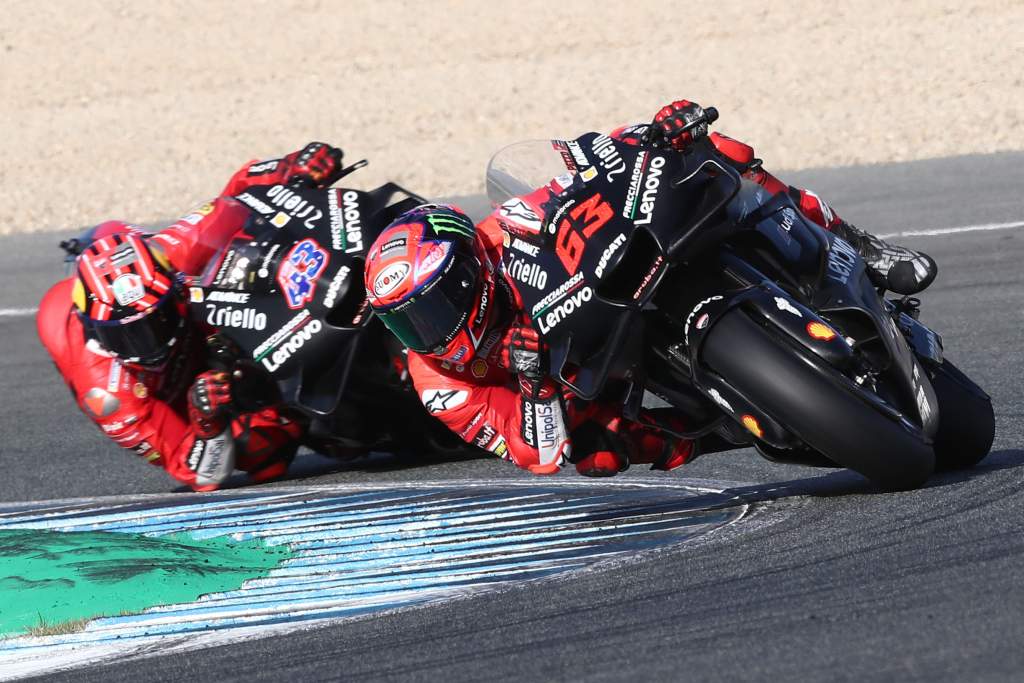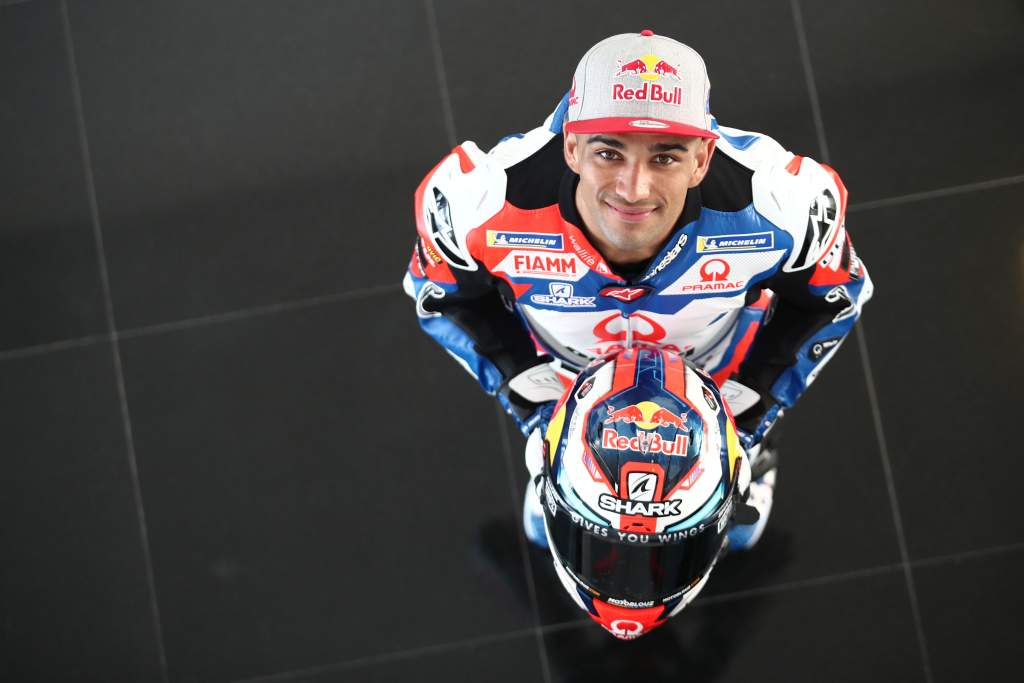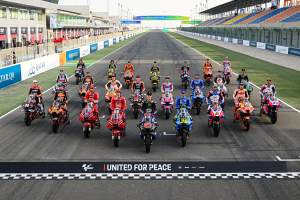The factory Ducati MotoGP team will start the 2022 season this weekend using not its new 2022-spec engines but rather a modified version of last year’s engine, after a dramatic 11th-hour change in direction was forced upon it only hours ahead of the start of the season by 2021 championship runner-up Pecco Bagnaia.
Bagnaia has made his dislike of the new engine well-known since first trying it in pre-season testing last month in Sepang, with a lack of feeling from the initial acceleration of the bike believed to be a particular grievance of his.
And, with the Italian factory very much seeing 2022 as its best hope since Casey Stoner in 2007 of lifting a riders’ championship, thanks in large part to Bagnaia’s stunning end to last year, the factory has caved to its rider’s demands and made a dramatic u-turn just before the championship kicks off at Qatar’s Losail circuit.

“We have homologated three specifications,” team boss Paolo Ciabatti confirmed exclusively to The Race. “One is a 2021 engine for some of the satellite riders, and then we have two different versions of the 2022.
“One is kind of a hybrid version that the factory riders prefer in terms of power delivery and the 2022 that we tested in Sepang is basically what the other riders have decided to go on with, the Pramac riders and Marini.
“We think our riders, especially Pecco, wanted something a little bit smoother, so in Mandalika we tried the 2022 engine with some specs of the previous engine, to make a kind of a hybrid version. In the end, that’s what was approved for the factory team.”
With MotoGP rules meaning both that the engine spec must be selected before the season starts and that a team using the same specification of bike must have both riders using the same engine, Bagnaia’s decision means that Jack Miller will be forced to also make the change back to the older engine – although, according to Ciabatti, it was a decision made in unison by the two riders.
However, the one piece of good news for the team is that it’s not quite a full reversion back to 2021’s race engine, but rather to a hybrid spec first used at the end-of-season Jerez tests in November. That engine is a modified improvement of the old engine which, thanks to a COVID-induced development freeze, is essentially the unchanged 2020 engine.

With the decision to make the change coming only ahead of the Qatar race, though, it means that there has been limited time to fully implement it across the board.
That lack of time to physically produce engines to take to Lusail, where the spec has to be frozen, means that the rest of the GP21 riders (Johann Zarco, Jorge Martin and Luca Marini) will remain with the 2022 engine they’ve been using throughout testing.
The bold move to follow Bagnaia’s chosen direction is a sign of just how much the team has put its trust into him for the coming season, with the decision to reverse its strategy to appease him very much a signal that he is now the number one rider within the factory squad.
But with the factory believing that the 2022 engine has more potential, even if it’s perhaps not quite ready to be fully competitive just yet, it could create an unusual dynamic towards the end of the season should Martin, in particular, find a way to make it work for him.

Martin, who is widely expected to succeed Miller in the factory team for 2023, could well end up with full factory support in the Pramac Racing garage by the end of the year should he live up to his expected potential, essentially being granted an early switch to factory rider status in all but colours if things go well for him.




